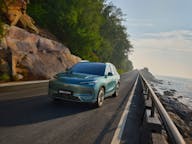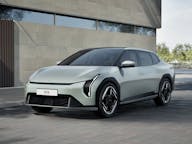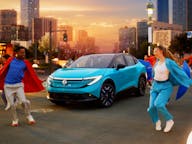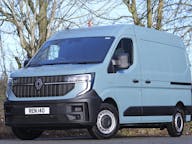The new Volvo ES90: Big on space, small on carbon
Volvo Cars has officially revealed its newest fully electric model, the Volvo ES90. This sleek, luxury saloon combines zero tailpipe emissions with a strong focus on sustainability. Production begins later this summer, and the ES90 is now...

Geely Auto to enter UK market with all-electric SUV in 2025
Geely Auto Group one of the world’s leading automotive manufacturers has announced its entry into the UK passenger car market and will launch its first UK model the all-electric Geely EX5 by the end of 2025.

Bentley unveils bold new emblem ahead of electric car concept reveal
Luxury carmaker Bentley is turning the page on a new chapter, and it’s starting with the badge. For only the fifth time in its 106-year history, Bentley has redesigned its iconic “Winged B” emblem.

Orders open for the Kia EV4 – Kia’s longest range EV to date
Kia has officially confirmed UK pricing and specifications for the brand new EV4, a sleek electric hatchback that marks the brand’s entry into the all-electric C-segment. With order books open from 1 July 2025 and customer deliveries...

Next-Gen Nissan LEAF: British-built EV icon returns with more range and smarter tech
Nissan has revealed the next generation of its pioneering electric vehicle, the all-new Nissan LEAF, promising more range, smarter tech, and a sleek new look, all built right here in the UK.

Government reviewing £40k 'Luxury Car Tax' threshold
In a move that could significantly boost the electric vehicle (EV) market, the UK government is contemplating raising the £40,000 threshold for the Expensive Car Supplement (ECS), often referred to as the 'luxury car tax'. This...

Nissan MICRA goes electric
Nissan has unveiled the all-new, sixth-generation MICRA, and this time it’s fully electric. Arriving in late 2025, the MICRA EV stays true to the qualities that made it a household name for over 40 years, offering a fresh take on the...


Renault and Hyundai clean up at Fleet World’s 2025 awards
2 in a row for Hyundai with IONIQ 6 retaining its 2024 title, and three’s a charm for Renault who have officially landed itself in the fleet spotlight, taking home not one, but three top trophies at this year’s Fleet World Great British...

Isuzu launches D-Max EV, the brand’s first electric pick-up
Isuzu has taken a major leap into the electric future with the unveiling of the New D-Max EV – Europe’s first fully electric commercial pick-up with genuine workhorse credentials.
